About Leather
Leather's individuality and aging
Mackerel Grand uses natural leather as the material for all of its products.
Just as each person's skin is different, each piece of leather made from animal hide has its own unique appearance, and these differences are what give each piece of leather its own personality.
Leather may show signs of wrinkles, scars, sagging skin, or traces of blood vessels that developed when the animal was alive, but please think of these signs as differentiating elements of each type of leather.
It is natural that each piece of leather made from animal hide is different, and no matter how carefully the tanning process is carried out, these individual differences cannot be avoided.
Please enjoy this as proof that it is a natural material and as part of the leather's unique character.
Another appeal of natural leather is that you can enjoy nurturing the leather and watching it age (change over time).
The more tanned leather is used, the more its color, texture, and shape change, and it takes on a unique atmosphere over time.
It may feel a little stiff when you first start using it, but the characteristic of tanned leather is that it will become comfortable in your hand as you continue to use it.
Generally, a product becoming worn is often seen as a negative thing, but when it comes to products made from vegetable-tanned leather, this is the exact opposite.
The more you use tanned leather and the more it ages, the deeper its appearance becomes.
The joy of developing a unique color and texture is what makes aging so enjoyable.
cowhide
Cowhide is leather from female cows that have been raised for over two years and have given birth. Because it is from a female cow, it is thinner and softer than steerhide or bullhide, but it is thicker and stronger than kipskin or calfskin. Another characteristic of cowhide is that the belly (abdomen) is more stretchy because it is leather from a female cow that has given birth.
Steerhide
Steerhide is leather from male cows that are castrated between three and six months of age and raised for more than two years. Castration makes the cows calmer and less likely to fight with each other, resulting in fewer scratches and a well-balanced leather thickness and durability. It is less delicate and softer than calfskin or kipskin, but its grain is very strong and durable. Another appeal of steerhide is that the leather becomes more comfortable and develops a unique texture the more it is used.
Bullhide
Bullhide is leather from male cows that have not been castrated and have been raised for at least three years. Among cowhides, bullhide is thick, very strong, and boasts top-class durability. However, uncastrated male cows have a bad temper and repeatedly fight, which is why bullhide has many scratches on the surface of the leather.
Various expressions seen on the grain surface (leather surface)
The grain surface of each piece of leather made from animal skin is different, and the appearance of each piece of leather varies greatly. Please understand that these individual differences are proof that leather is a natural material, and also the individuality and differentiating factor of each piece of leather. Below is an explanation of the various expressions that can be seen on the grain surface.
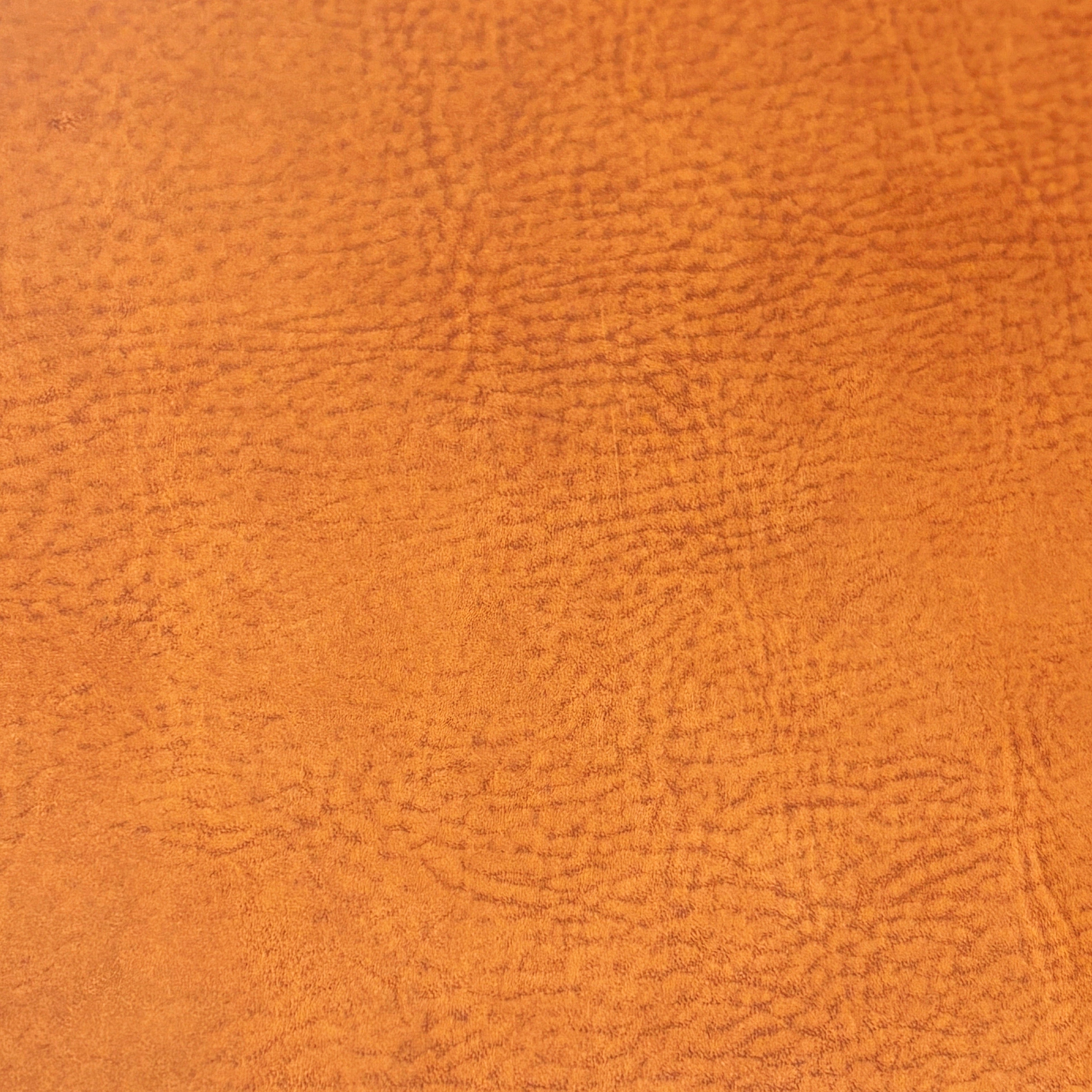
Grain
Grain is one of the wrinkles on the raw leather, which appears as undulating marks on the grain surface. This gives the leather a unique appearance that is enjoyable not only in appearance but also in the uneven feel.
The size of the grain varies depending on the fiber density of the leather. The size of the grain greatly changes the appearance of the grain surface, with larger grain creating a powerful impression and smaller grain creating a more refined impression.
The way the grain appears depends on the fiber density and tightness of the leather, so even a single piece of leather will look different in different parts.
In particular, the areas from the neck to the shoulders and around the stomach have large changes in fiber density, resulting in a variety of grain patterns.
Grain can also be created through processing, such as "empty beating," in which only the leather is placed into a drum called a drum and the leather is beaten against it to loosen the fibers and create grain, and "shrink processing," which uses chemicals to create a uniform grain.
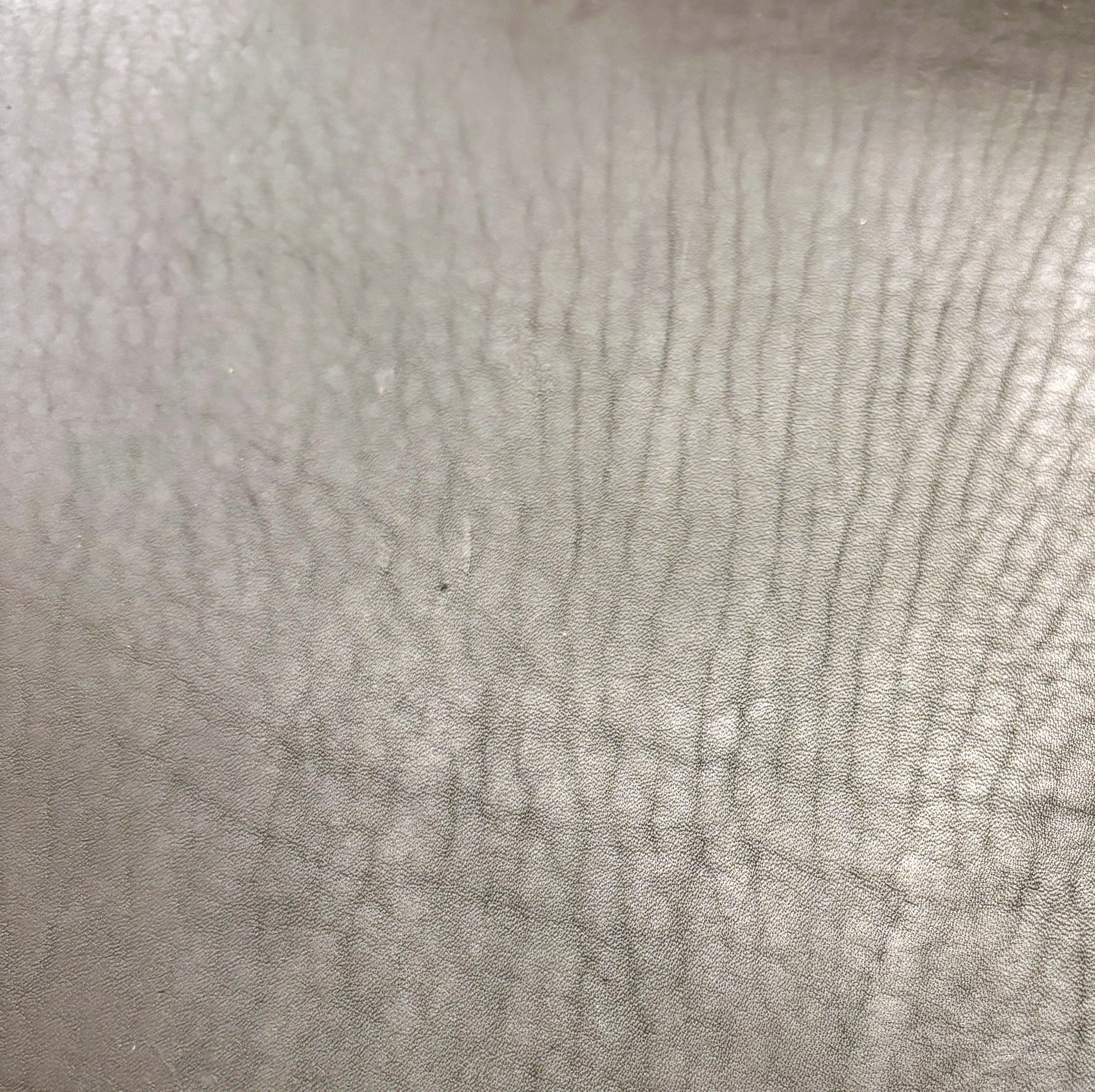
Tiger
Leather, being a natural material, strongly reflects the physical characteristics of the animal from which its skin was harvested.
Tiger marks are wrinkles that run like lines on the silver surface of the leather and appear in areas that are prone to wrinkling, such as the neck, shoulders, back, and stomach.
The tiger marks can appear differently depending on the individual and the part of the leather, and can look like deep streaks or fine lines, but as they are not cracked or damaged, they do not affect the quality of the leather.
In fact, the area from the neck to the shoulders and back, where the tigers are born, is said to be stronger than other parts of the cow's body because it is one of the most mobile parts of the body.
Furthermore, tiger-print leather is recognized as a natural marking that enhances the leather's appearance.
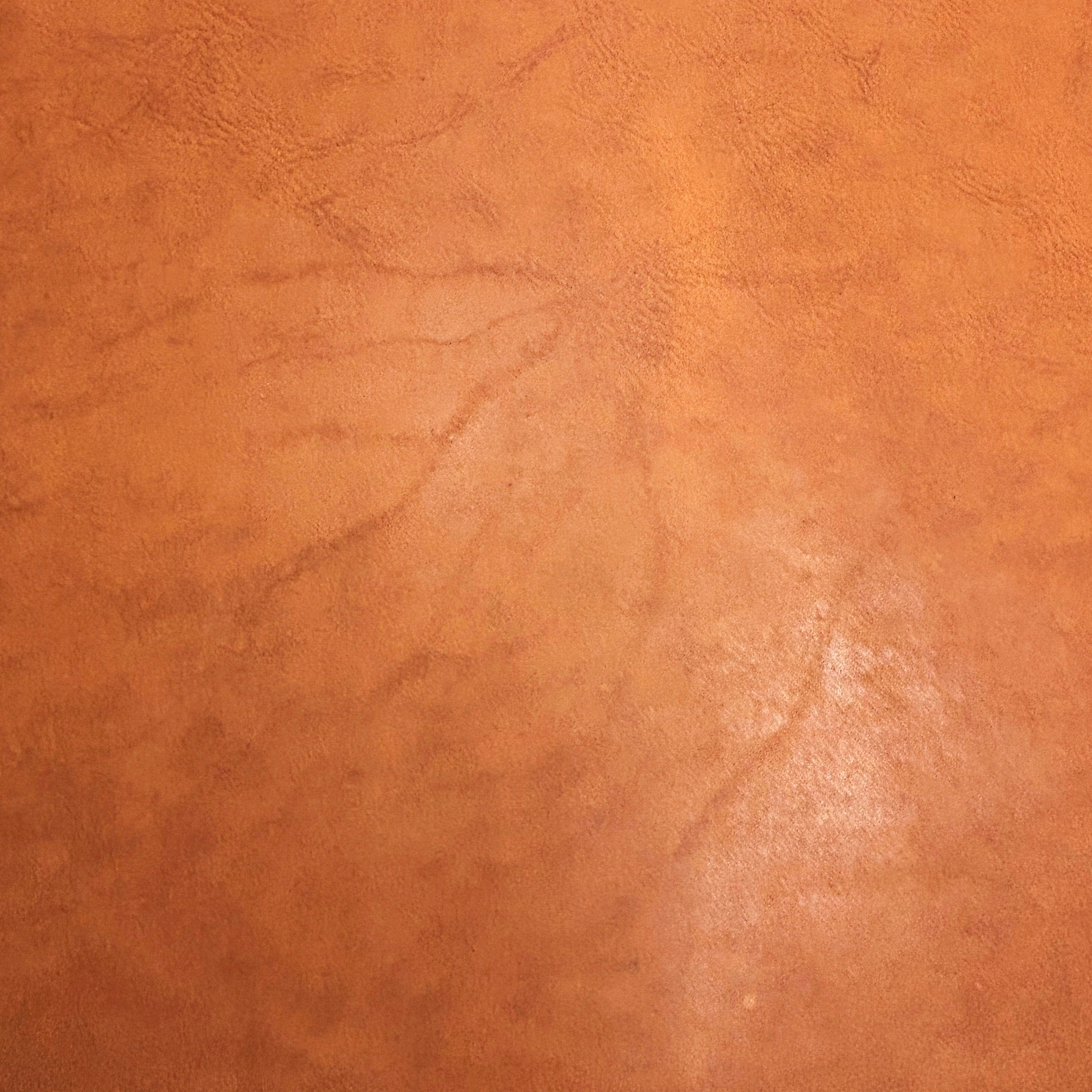
Bloodline
Among natural materials, leather has a unique feature called blood lines.
Blood vessels are traces of blood vessels that ran just under the skin, and appear as fine, branching streaks on the silver surface of the leather.
In particular, in leather with a natural texture such as tanned leather, the blood vessels can be clearly seen from both the front and back of the leather. Except in cases where the blood vessels significantly detract from the aesthetic look of the leather, they are accepted as part of the leather's appearance and are recognized as an individual feature of the leather.
Furthermore, blood vessels are a unique pattern that only appears in genuine leather, so their presence is proof that the leather is genuine.

Rose scratches
Animals kept outdoors have a variety of blemishes on their skin, such as scars from getting caught on fences, insect bites, and scars from fighting.
Blisters are marks left on the grain surface of the leather.
Most raw hides from North and South America come from cattle that graze on the grasslands, and are said to have many scars.
Scratches are a natural part of natural leather, and as long as they do not affect the strength of the leather or significantly impair the beauty of the grain, they are recognized as one of the natural features of the leather.
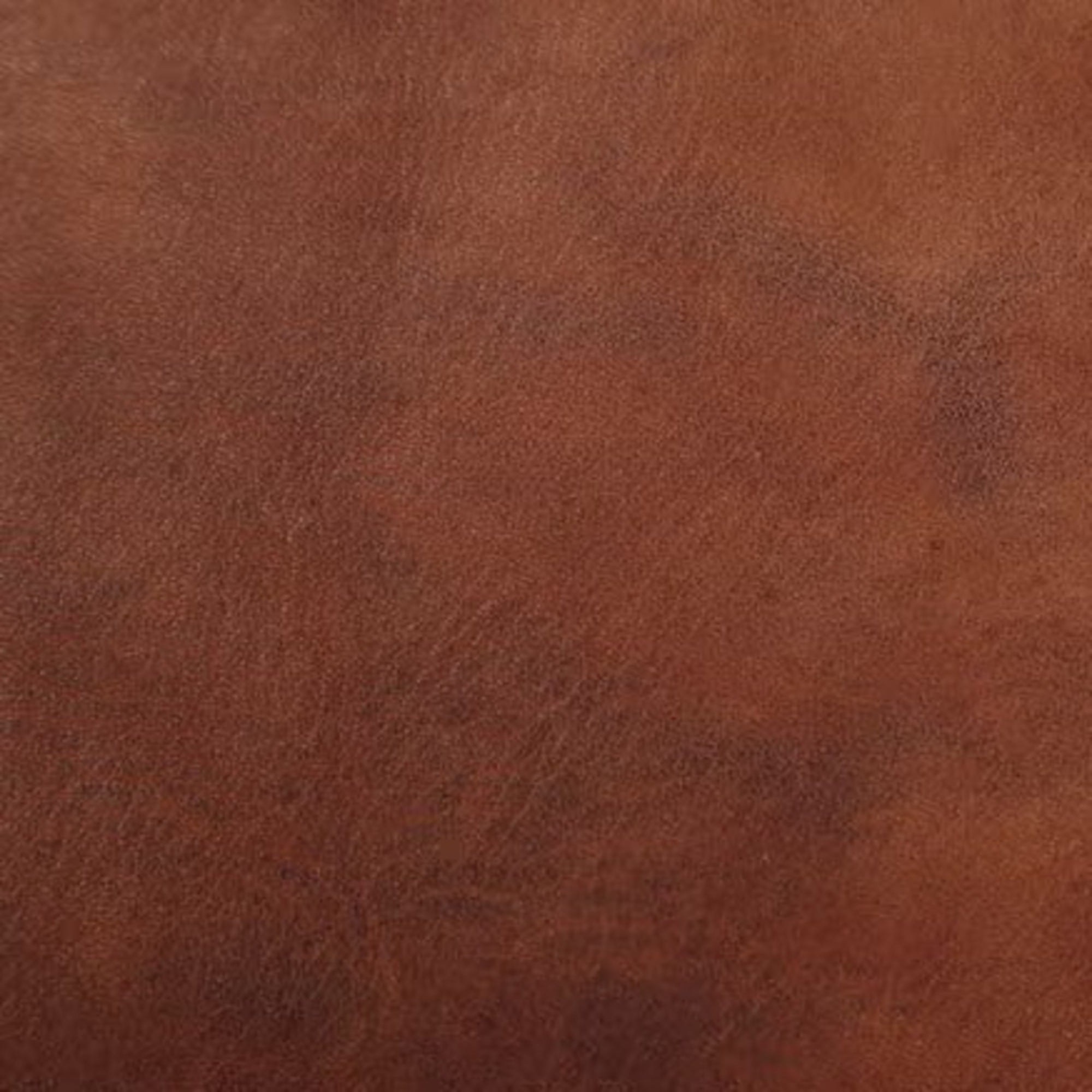
Uneven dyeing
Leather is made from animal skin, and since the thickness, density, and properties of the fibers themselves vary depending on the part, the dye does not penetrate evenly, and there are often variations in the color of the grain surface.
These differences in color that appear on the grain surface are called uneven coloring or uneven dyeing. Generally, the thinner parts of the leather tend to be darker in color and the thicker parts tend to be lighter in color.
In addition, the fiber density and thickness of the raw hides used to make leather vary not only depending on the part of the body, but also on the rearing environment, breed, sex and age of the cow, making it impossible to dye the grain surface uniformly.
That is why uneven color is recognized as an effect that enriches the appearance of the silver surface.

Pinhole
Pinholes are pores and hair roots from the animal that made the leather appear on the grain surface.
Since animals' entire bodies are covered with hair, there are countless hair pores and hair roots in the hide.
Generally, these pores and hair roots become almost invisible through surface treatments such as shrinking, embossing, and crinkling the leather, or through coloring with pigments. However, pores and hair roots may remain on the grain surface depending on the part of the leather, individual differences, and type of animal.
In particular, in the case of leather that has only been dyed and has barely any surface treatment, such as tanned leather, traces of pores and hair roots may appear as a natural feature.
Pig, goat, and ostrich leather each have their own unique pores scattered across the entire surface, creating a unique look.
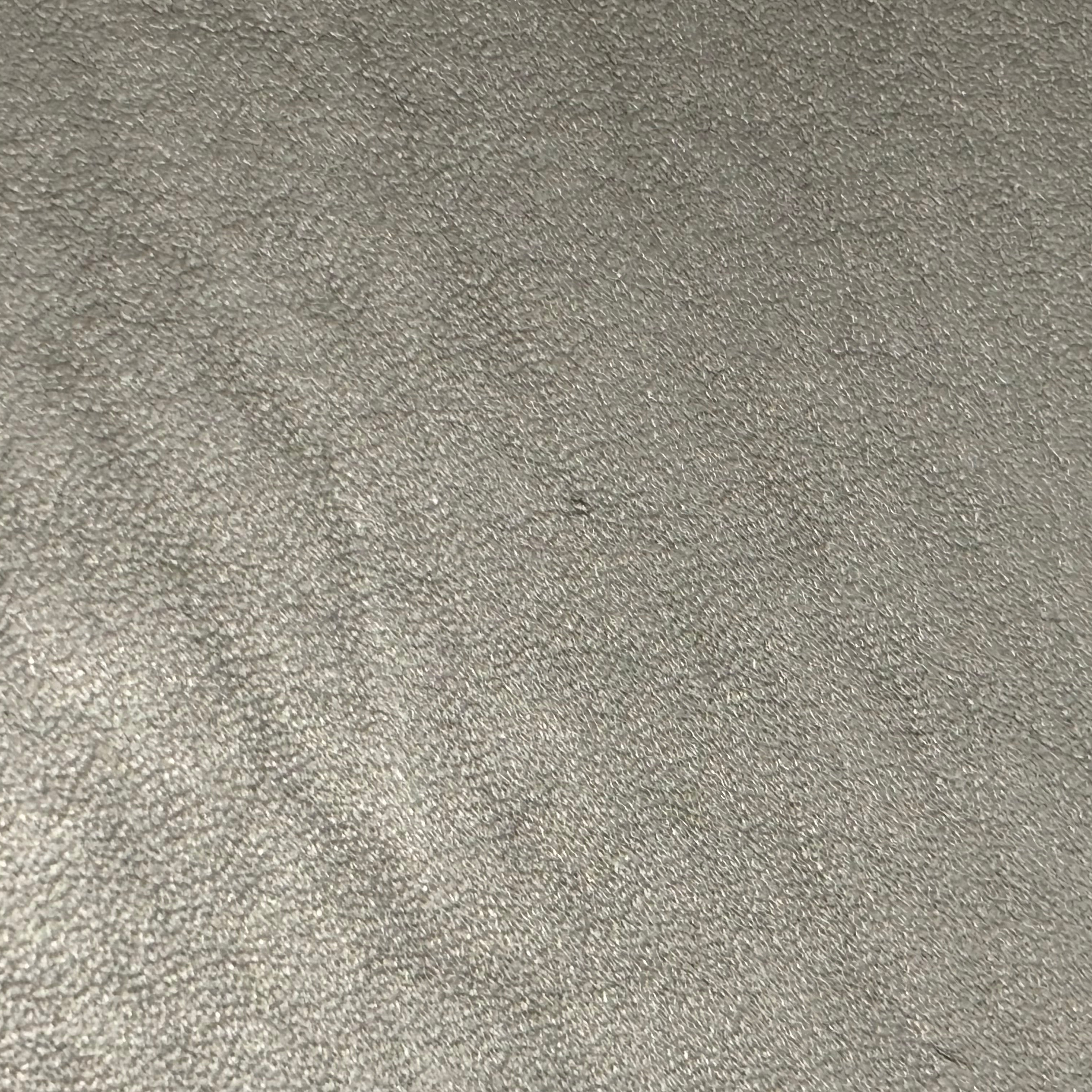
Moles, scabs
Cowhide, the material used to make leather, also has moles, just like human skin.
Moles can appear in a variety of areas, but some staining methods can make moles appear darker.
Additionally, after a wound on the raw hide has healed, high scabs may remain on the silver surface.
Depending on the size and depth of the scratch, it may appear as a small hole, and the way it appears on the silver surface can vary greatly.
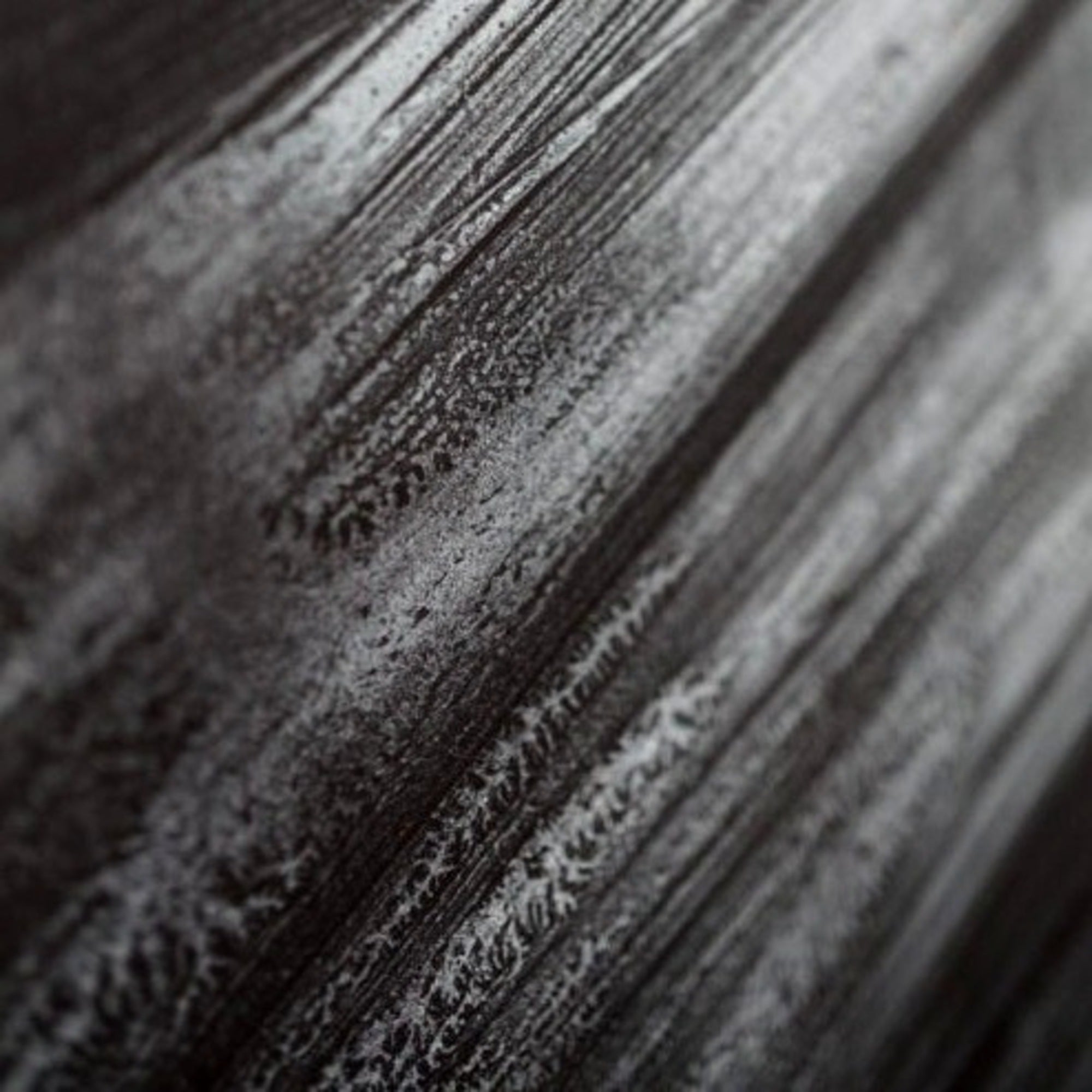
Bloom
Bloom is the appearance of solidified grease components on the silver surface.
Grease is a mixture of tallow, beeswax, wax, etc.
By soaking the leather in grease, you can increase the waterproofing effect of the grain surface and also prevent the entire leather from drying out.
Also, the grease is transparent immediately after it is applied to the leather, but over time the wax solidifies and appears as a white layer on the grain surface.
The bloom that appears on the product will dissolve due to body heat and other factors as you use the product, and will gradually fade. However, if you do not use the product for a certain period of time, the bloom may reappear on the silver surface.
The white bloom that appears on the silver surface is widely known as evidence of carefully crafted leather.
Leather tanning methods and characteristics
Tanning is a process that is applied to animal hides to prevent them from hardening due to drying or decaying due to humidity.
Through dozens of steps, the structure of the hide becomes chemically stable and is transformed into a material that can be stored for long periods, transforming it into "leather."
In other words, the hide is tanned to become leather, a natural material that is highly durable and long-lasting.
Tannin tanning
Tannin tanning is a method of tanning leather using a tanning agent whose main component is tannin extracted from plant bark, and has been practiced since ancient Egyptian times.
Tannin tanning is a time-consuming and labor-intensive process that can take several months, but it tightens the leather's fiber structure, making it more durable and less likely to lose its shape.
In addition, the grain of tanned leather, which is highly absorbent, becomes stronger the more it is used, but the texture becomes softer (the leather's fiber structure loosens).
Furthermore, the texture of the silver surface changes with use, and the ability to enjoy the aging process is one of the great attractions of tannin-tanned leather.
Chrome tanning
Chrome tanning is a method that uses basic chromium sulfate as a tanning agent and is a relatively new tanning method that was developed in Germany in 1858.
Chrome tanning is a time- and labor-saving processing method, making it suitable for mass production.
In addition, leather tanned with chrome tanning has a surface that is more likely to repel water, and is also flexible, durable, and has good dyeability.
Chrome-tanned leather changes very little over time, so you can't enjoy the aging process, but one of its major advantages is that it doesn't require regular maintenance.
Combination tanning
Combination tanning is a tanning method that uses a combination of multiple tanning agents (usually tannin tanning agents and chrome tanning agents), making the most of the characteristics and advantages of both tannin tanning and chrome tanning.
Generally, after chrome tanning, tannin tanning agents are added and the leather is tanned.
This not only allows you to enjoy the aging process like tannin-tanned leather, but also results in leather that is both durable and flexible like chrome-tanned leather.
Combination tanning has been attracting a great deal of attention in recent years because it has the advantage of producing characteristics that cannot be obtained with a single tanning agent and compensating for the shortcomings of single tanning.
Leather maintenance
Here are some maintenance methods to ensure that you can enjoy your Mackerel Grand products for a long time. When leather dries out, just like human skin, the grain (surface of the leather) can crack, become more susceptible to dirt and become more susceptible to damage. Once cracks occur, they cannot be restored to their original state, so regular maintenance is essential to ensure that your precious leather products last a long time.
Maintenance methods vary slightly depending on the type of leather used in the product, but the basic process is the same. Here, we will introduce in an easy-to-understand manner the maintenance methods that are common to all leather products.
Maintenance frequency
When considering the frequency of maintenance, it is important to consider leather accessories such as wallets and accessories, where you have more opportunities to touch the entire leather, and leather bags, where you don't often have the opportunity to touch the entire leather.
Small Leather Goods
Leather accessories are something we often handle with our hands, and as the leather naturally retains moisture during daily use, the grain of the leather tends to develop a shine and age quickly.
The grain is less likely to crack, but by using leather cream to create an oil film on the grain, it keeps the grain less susceptible to dirt and allows for beautiful aging.
If you feel that the leather is becoming dry, please clean it.
Leather accessories should be cared for about once a season by removing dirt with a cleaner and then moisturizing with leather cream.
Leather Bags
Cross-shoulder bags and leg bags, for example, are rarely touched by hands except for the parts that are in contact with the body, so regular maintenance is essential.
To prevent the parts that come into contact with the body from changing color, maintenance is required about once every two months.
Regular maintenance will allow the entire leather to age beautifully, and the moderate oil film will protect the bag, helping to prevent water stains.
Maintenance Procedures
The process for maintaining leather is the same as caring for human skin.
First, remove dirt (cleansing), then moisturize. By repeating this process, the leather will age beautifully.
1. Remove dust from the leather surface with a brush.
First, use a brush (we recommend a horsehair brush made for leather) to remove any dust or fingerprints on the surface of the leather. Dust and other dirt tend to accumulate around the seams and zippers, so brush them thoroughly.
If the stain is severe, wipe off the dirt from the leather surface with a tightly wrung out wet towel. Wipe gently, using the moisture to loosen the dirt.
2. Wipe off dirt with a cleaner
After brushing, wipe off the dirt with the cleaner. Apply a small amount of cleaner to a clean, dry cloth and rub the cleaner into the cloth until it is absorbed. Once the cleaner is absorbed into the cloth, wipe the entire surface of the leather.
When doing this, it is important to wipe lightly without applying too much pressure.
3. Moisturize with leather cream
After thoroughly removing dirt with the cleaner, moisturize the leather with leather cream.
Take an amount of leather cream onto a clean, dry cloth, about the size of the first joint of your pinky finger. Rub the leather cream into the cloth to work it in.
Once the leather cream has absorbed into the fabric, apply it evenly over the entire leather surface.
The key here is to apply the leather cream as thinly and evenly as possible to avoid staining.
4. Wipe dry
Once you have applied the leather cream, wait a little while to allow the leather cream ingredients to soak into the surface of the leather.
Finally, gently wipe with a dry, soft cloth to complete your leather maintenance!
About waterproof spray
If the leather surface gets wet from rain or water, it may cause stains, discoloration, and blisters.
Proper care with a waterproof spray will help prevent damage to the leather and protect it from dirt, so we recommend making effective use of a waterproof spray.
The standard is to use waterproof spray once per rain.
To protect your bags and other leather products from rain and water, it's important to prepare in advance if rain is likely.
On the other hand, waterproof sprays coat the surface of the leather, which can prevent the leather from breathing, make it difficult for leather cream to penetrate, and cause the surface to harden and crack, so it is important not to use too much.
How to use waterproof spray
Before applying the waterproof spray, remove any dust or dirt from the leather surface with a brush (we recommend a horsehair brush made specifically for leather). Be sure to also remove any dust or dirt from the seams and zippers.
Use waterproof spray in a well-ventilated place. Please note that using waterproof spray in a closed room or other poorly ventilated place may cause you to feel unwell. When spraying waterproof spray, it is important to spray evenly from a position about 30 cm away from the leather surface. Please note that leather and waterproof sprays are not compatible (sprays that are not suitable for leather may cause stains or discoloration), so please test on an inconspicuous area before using for the first time.
Allow the waterproof spray to dry until it is absorbed into the leather surface. The waterproof effect is low immediately after spraying the waterproof spray, so if you are going out, please allow yourself plenty of time to care for the item. Once the leather surface is dry, gently wipe it off with a soft cloth. After wiping the leather surface, drop a few drops of water on it to test the water repellency. If the leather surface repels water, the waterproof care is complete. The waterproof effect varies depending on the waterproof spray, so please check the number of days it will last for each product.
How to deal with the rain
Even if you take waterproofing measures, it is a good idea to get into the habit of immediately wiping off the leather surface if it gets wet in the rain.
Even if you protect the leather surface with a waterproof spray, if the spray is applied unevenly or the spray's effectiveness wears off over time, it may not be possible to completely prevent stains or fading.
Another way to care for your leather bag is to not use it when it looks like it is about to rain, and let it rest.
If you have a large stain, it may not be easy to get it back.
Also, if you coat the leather too much with waterproof spray, it can damage the texture and appearance of the leather surface and make it harder for it to age.
To ensure that you can continue to use leather products such as bags comfortably, one effective way to care for them is to take precautions in advance, such as not using them on days when it looks like it might rain, or not taking them to places where they may get wet.

